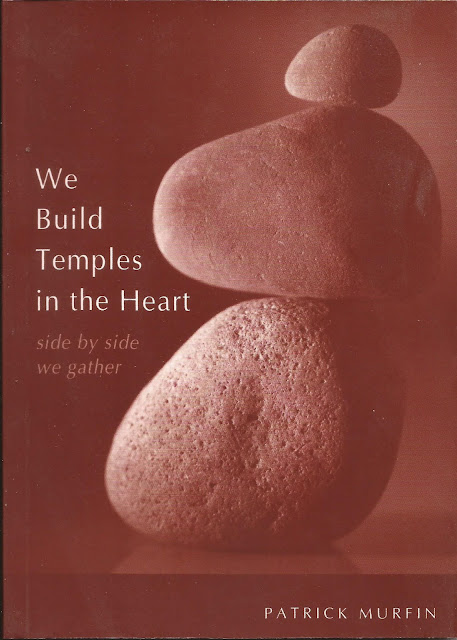Although the statisticians tell us we do it in ever dwindling numbers, many of us are still off to church this Sunday morning—or
would be except for Coronavirus
precautions observed in many places and to various degrees. I have not stepped foot in my own church, the Tree of Life Unitarian Universalist Congregation in McHenry, Illinois since mid-March of last year. But I haven’t missed a Zoom service in all of that time until today when I ironically have
my second vaccine shot
scheduled. A lot of other folks have
Zoomed it as well. In fact our log-in attendance has actually been greater than our usual in-person services. Perhaps the pandemic will permanently
change how many of us worship
and how tightly tethered we will
remain to our brick and mortar temples.
Even before the emergency there was
an ongoing theological debate about
whether the church is the building or
the congregation. Let’s split the difference and say it’s both.
The buildings in which we gather
and worship tell us a lot about the folks
therein and perhaps their expectations
and hopes. Should the building be a hymn and monument to God, or should it be a humble house for the faithful? Christianity
has tugged us both ways.
Here are three takes on that.
Building Aix la Chapelle Grandes from the Chroniques-de-France
The 20th Century Welch poet John Ormond considered the masons and laborers who spent their whole
lives building temples that their grandchildren
might not see completed.
The Cathedral Builders
They climbed on sketchy ladders towards God,
with winch and pulley hoisted hewn rock into heaven,
inhabited the sky with hammers,
defied gravity,
deified stone,
took up God’s house to meet him,
and came down to their suppers
and small beer,
every night slept, lay with their smelly wives,
quarrelled and cuffed the children,
lied, spat, sang, were happy, or unhappy,
and every day took to the ladders again,
impeded the rights of way of another summer’s swallows,
grew greyer, shakier,
became less inclined to fix a neighbour’s roof of a fine evening,
saw naves sprout arches, clerestories soar,
cursed the loud fancy glaziers for their luck,
somehow escaped the plague,
got rheumatism,
decided it was time to give it up,
to leave the spire to others,
stood in the crowd, well back from the vestments at the consecration,
envied the fat bishop his warm boots,
cocked a squint eye aloft,
and said, “I bloody did that.”
—John Ormond
The American poet E. E. Cummings
was the son of noted and scholarly Unitarian
minister. In his youth he rebelled against his father and his
religion. Late in life he reconsidered and re-connected with Unitarianism.
It was during that period he wrote this.
I am a little church (no great cathedral)
i am a little church (no great cathedral)
far from the splendor and squalor of hurrying cities
-i do not worry if briefer days grow briefest
i am not sorry when sun and rain make april
my life is the life of the reaper and the sower
my prayers are prayers of earth's own clumsily striving
(finding and losing and laughing and crying) children
whose any sadness or joy is my grief or my gladness
around me surges a miracle of unceasing
birth and glory and death and resurrection:
over my sleeping self float flaming symbols
of hope and i wake to a perfect patience of mountains
i am a little church (far from the frantic
world with its rapture and anguish) at peace with nature
-i do not worry if longer nights grow longest;
i am not sorry when silence becomes singing
winter by spring, i lift my diminutive spire to
merciful Him Whose only now is forever:
standing erect in the deathless truth of His presence
(welcoming humbly His light and proudly His darkness)
—e. e. cummings
And finally, one from the Old Man, the title
poem in fact of my 2004 Skinner
House collection. This is the
original version, slightly longer than it appeared in the book
We Build Temples in the Heart
We have seen the great cathedrals,
stone laid upon stone,
carved and cared for
by centuries of certain hands,
seen the slender minarets
soar from dusty streets
to raise the cry of faith
to the One and Only God,
seen the placid pagodas
where gilded Buddhas squat
amid the temple bells and incense.
We have seen the tumbled temples
half buried in the sands,
choked with verdant tangles,
sunk in corralled seas,
old truths toppled and forgotten,
even seen the wattled huts,
the sweat lodge hogans,
the wheeled yurts,
the Ice Age caverns
where unwritten worship
raised its knowing voices.
But here, we build temples in our hearts
side by side we come,
as we gather—
Here the swollen belly
and aching breasts
of a well-thumbed paleo-goddess,
there the spinning prayer wheels
of lost Tibetan lamaseries;
mix the mortar of the scattered dust
of the Holy of Holies
with the sacred water
of the Ganges;
lay Moorish alabaster
on the blocks of Angkor Wat
and rough-hewn Stonehenge slabs;
plumb Doric columns
for strength of reason,
square with stern Protestant planks;
illuminate with Chartres’
jeweled windows
and the brilliant lamps of science.
Yes here, we build temples in our hearts,
side by side we come,
scavenging the ages for wisdom,
cobbling together as best we may,
the fruit of a thousand altars,
leveling with doubt,
framing with skepticism,
measuring by logic,
sinking firm foundations in the earth
as we reach for the heavens.
Here, we build temples in our hearts,
side by side we come,
a temple for each heart,
a village of temples,
none shading another,
connected by well-worn paths,
built alike on sacred ground.
—Patrick
Murfin





No comments:
Post a Comment